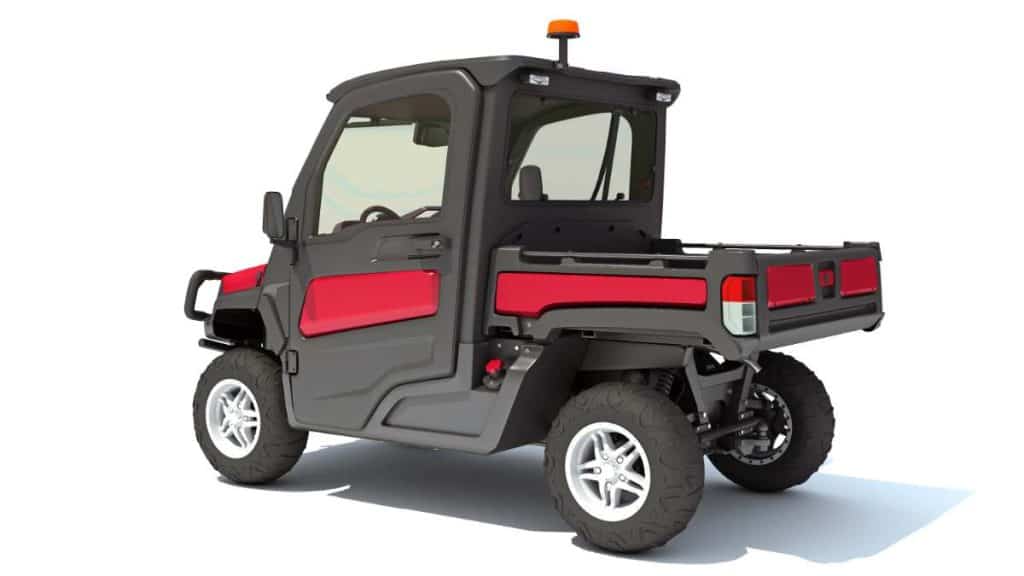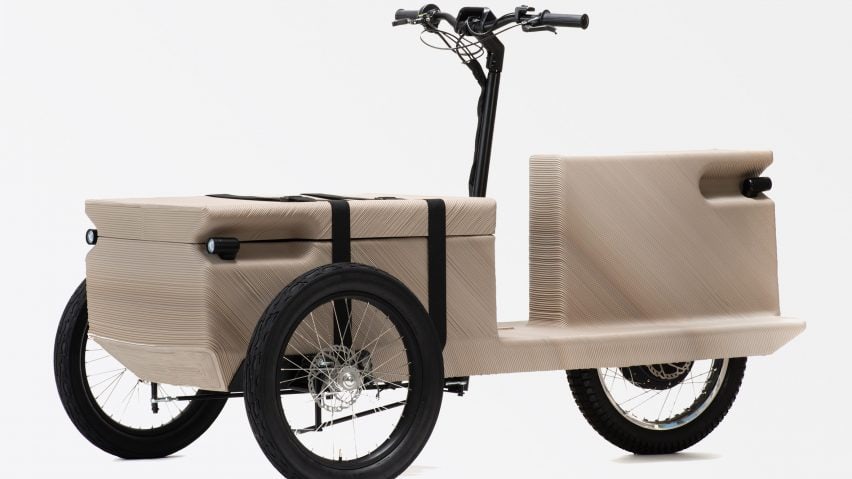With 36 million parcels delivered each day in the United States, the push for clean transport isn’t just about personal vehicles.
Utility vehicles, designed to carry out specific tasks more efficiently than a passenger vehicle, exist in a wide range of industries and are often highly specialized.
Besides delivery vans, there are fork-lift trucks, golf carts, bulldozers, tractors, airport vehicles, and light mobility options such as bikes and tricycles. A large portion of these are powered by an internal combustion engine and contribute to both air pollution and greenhouse gas emissions.
As the pressure mounts to implement a clean transport transition, the focus has widened from personal transport to fleet and utility vehicles. This post aims to provide an overview of some types of utility vehicles and where things stand with respect to them becoming zero emission vehicles (ZEVs).

Key Takeaways
| 1 | Zero-emission utility vehicles are those that do not produce any tailpipe exhaust emissions. This category includes electric vehicles, hydrogen fuel cell vehicles, and plug-in hybrid electric vehicles. |
| 2 | Incentives and programs such as the Zero-Emission Agricultural Utility Terrain Vehicle Voucher Program and the Zero-Emission Vehicle (ZEV) program aim to encourage the adoption of zero-emission vehicles. |
| 3 | Technological advancements have allowed the development of affordable zero-emissions utility vehicles, such as those made from a Fiber Reinforced Plastic (FRP) composite by the Austrian design studio, EOOS. |
| 4 | Eco-friendly alternatives to traditional transportation systems, such as electric tricycles for local deliveries, are being developed in addition to sustainable commercial electric platforms for urban services by innovative companies like Zeroid. |
Understanding Zero Emission Utility Vehicles
Zero emission utility vehicles are a revolutionary innovation in the transportation sector. These types of vehicles do not release any tailpipe exhaust emissions of certain pollutants. Instead, they use advanced propulsion technologies that do not result in the production of internal combustion engine exhaust or other harmful carbon emissions.
This category comprises multiple types of vehicles including electric vehicle, hydrogen fuel cell vehicle, and plug-in hybrid electric vehicles.
Each type uses different mechanisms but all share the common feature of producing zero emissions during operation. From small cars to heavy-duty trucks and buses, zero-emission utility vehicles have paved the way for a cleaner, greener future.
The advent of these eco-friendly vehicles is a significant stride towards tackling global problems such as air pollution and climate change while providing sustainable solutions for transportation needs. It’s clear: the future lies with these emission-free modes of transport.
Incentives and Programs Encouraging the Adoption of Zero-Emission Vehicles
Various programs and incentives are being implemented globally to encourage adoption of zero emission utility vehicle. For instance, the Zero-Emission Agricultural Utility Terrain Vehicle Voucher Program is designed to help replace existing diesel or petroleum-powered cars and trucks.
You may well have already heard of California’s Zero-Emission Vehicle (ZEV) program which forms part of CARB’s Advanced Clean Cars package.
The program aims at controlling smog-causing pollutants by promoting adoption of clean energy modes such as electric cars, hydrogen fuel cell cars etc.
These incentives not only promote sustainable transportation, but also boost technological advancement in this sector by providing an avenue for research, growth and innovation.
The Rise of Affordable Zero-Emission Utility Vehicles
Technological advancements have made it possible for affordable zero-emission utility vehicles to become a reality. Companies like EOOS are developing innovative ways to produce cost-effective electric cars featuring FPV composite.
EOOS has also created a prototype 3D-printed zero-emissions utility vehicle made from recycled materials, which they have named the “ZUV” – Zero Emissions Utility Vehicle – an example that showcases how technology can be used smartly while remaining environmentally responsible.

These developments are contributing significantly towards making zero-emission technology accessible to everyone – ultimately driving us closer towards achieving our green goals.
Electric Tricycles: A Local and Economical Solution
Electric tricycles present another facet to zero-emission solutions; economical on both budget as well as resources, they form an effective local solution as an environmentally-friendly traffic alternative.
Companies like Zeroid provide sustainable commercial electric platforms suited perfectly for urban services – contributing towards reducing traffic congestion while maintaining minimal pollution levels.
This proves that sustainability doesn’t necessarily require huge sacrifices or drastic lifestyle changes – sometimes simple modifications like switching from four wheels to three can make all the difference.
Commitments from Major Automakers towards Zero Emissions
Major automakers worldwide are recognizing their role in achieving sustainability goals and making commitments accordingly. General Motors has pledged to sell only zero-emission vehicles by 2035 which indicates their dedication towards creating a sustainable future through green mobility solutions
.
By setting these benchmarks, automakers aren’t just contributing towards environmental conservation but also influencing consumer behaviour positively – pushing more people towards adopting sustainable transportation.
These initiatives reflect growing acceptance among key industry players about necessity for sustainable transport solutions in order effectively combat climate change.
Decarbonizing the Auto Sector: The Necessity for Sustainable Transport
Decarbonizing auto sector is no longer optional; it’s a necessity if we want Earth’s future generations live on healthy planet without threat looming climate change disasters.
Achieving this will require two-thirds 90% passenger autos being b>sustainable transportation/em>. This emphasizes importance clean energy models like those provided by renewable energy sources.
Transitioning traditional gas-guzzling automobiles environment-friendly ones isn’t easy task however with right policies place collective commitment industry players consumers alike every difficult step brings us closer greener healthier world.
In Conclusion
The transition towards a more sustainable society also includes the need for zero-emission utility vehicles. These vehicles have a pivotal role in decreasing global carbon emissions. Also, they can be powered by renewable energy sources such as solar or wind power, further reducing their environmental impact.
It’s important to note that while these vehicles represent a significant step forward in sustainable transportation, there are still challenges to be addressed. These include improving the charging infrastructure and increasing their range and efficiency, as well as a fluctuating political climate.
FAQs
What qualifies a vehicle as a zero-emission utility vehicle?
A vehicle is classified as a zero-emission utility vehicle if it does not produce any tailpipe exhaust emissions of certain pollutants. These vehicles use propulsion technologies, such as electricity or hydrogen fuel cells, that do not result in the production of internal combustion engine exhaust or other carbon emissions.
What are some examples of programs designed to encourage the adoption of zero-emission utility vehicles?
There are several programs in place to encourage the use of zero-emission utility vehicles. Examples include the Zero-Emission Agricultural Utility Terrain Vehicle Voucher Program for replacing existing diesel or petroleum-powered cars and trucks, and the Zero-Emission Vehicle (ZEV) program, which forms part of CARB’s Advanced Clean Cars package.
What advancements have been made to make zero-emission utility vehicles more affordable?
Technological advancements have led to more affordable zero-emissions utility vehicles. For instance, EOOS, an Austrian design studio, has created a vehicle featuring a Fiber Reinforced Plastic (FRP) composite. There’s also increasing development in economical options like electric tricycles and local solutions provided by companies such as Zeroid.
What commitments have major automakers made towards zero emissions?
Major automakers are acknowledging the necessity for sustainable transport solutions. For example, General Motors has publicly committed to selling only zero-emission vehicles by 2035. Furthermore, experts predict that decarbonizing the sector will require two-thirds to 90% of passenger autos be zero-emission vehicles by 2050.
- Tesla Charger Installation Cost (Home Setups) - March 1, 2024
- Tesla Phone Key Disconnected (Troubleshooting Guide and Quick Fixes) - March 1, 2024
- Tesla FSD 12 (Explained) - March 1, 2024